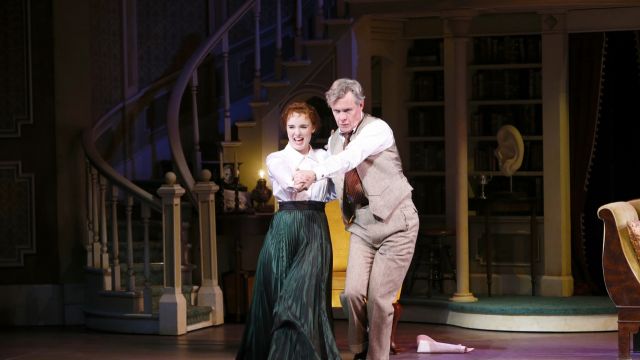My Fair Lady
Slip into your seats in Sydney Opera House’s Dame Joan Sutherland Theatre, as producers John Frost and Opera Australia throw the switch on their theatrical time capsule, transporting us to 1956, the height of Broadway’s Golden Age of Musical Theatre.
My Fair Lady’s overture, encapsulating Frederick Loewe’s timeless score, is delivered in all its glory by a lavish 32 piece orchestra, the likes of which you haven’t heard from a musical theatre pit in years, lifting spirits from its opening strains.
Celebrating the 60th Anniversary of one of musical theatre’s masterpieces, with the promise to faithfully recreate its original Broadway production, My Fair Lady is back in Sydney, lovingly staged in a gorgeous production under the guidance of the original Broadway and West End Eliza Doolittle, Dame Julie Andrews.
Not that everything has stood still, though Oliver Smith’s original sets and Cecil Beaton’s stunning costumes have been faithfully and painstakingly reproduced, making the evening a visual treat.
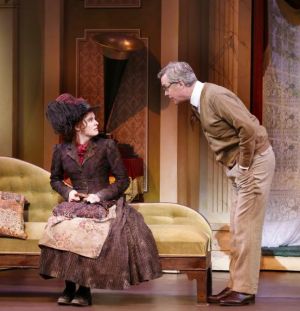
Audiences used to sophisticated stage automation may be a little taken aback as curtains close while the orchestra plays to mask set changes, by rippling scenic cloths and the three-plus hours running time. It’s all part and parcel of the event we’d been promised, and will, for many audience members, spark nothing but nostalgic pleasure.
Meeting Professor Henry Higgins, you’d be forgiven for thinking that the time machine had re-set to the days of Dinosaurs (aka early 20th century men). While Higgins was written to fit Rex Harrison like a second skin, with his theatrical DNA stamped all over the role he recreated on film, British leading man Alex Jennings’ Higgins, forged in his 2003 Olivier Award winning West End performance, is a convincing, originally nuanced portrayal of a passionate, crusty academic loner, short on tact, sensitivity and interpersonal skills.
While Higgins is trapped in his politically incorrect time warp, Anna O’Byrne’s Eliza Doolittle is a strong contemporary woman from the outset, never short on ambition.
O’Byrne’s Eliza delights throughout her compelling personal and vocally delightful musical chrysalis from cockney flower seller. World-weary and cynical before her age on first acquaintance, though never without her dreams, O’Byrne’s Eliza is a marvelously passionate spitfire. Her enormous character arc is the enduring heart of this production, most memorable for me in her transformation turning point during the opening of lines of “The Rain in Spain”. Repeating that one well-known line, “The rain in Spain stays mainly in the plain”, we’re transported with her, from stumbling syllables of dejected exhaustion to a bell-like soprano expression of elation. Rich in humanity, sparkling vocally and blending comedy and drama, her’s is a performance to savour.
After provoking Eliza to leave him, Higgins’ retreat into misogyny, denying his own shortcomings, followed by Eliza’s hard-to-explain return in the finale, date this musical adaptation of George Bernard Shaw’s original 1913 play Pygmalion, which offered no such magical happy ending.
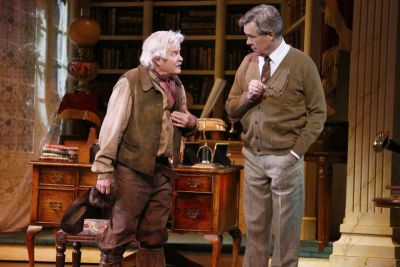
Happier reminders of the era and its entertainments emerge in the supporting roles. Tony Llewellyn-Jones’ Colonel Pickering is made of stalwart British Empire stuff, counterbalancing Higgins with wit and charm. Reg Livermore’s Music Hall turns as Eliza’s father Alfred P Doolittle are boisterous romps, which utterly delight.
Robyn Nevin as Mrs Higgins, full of dry wit, while never letting her son off the hook, Deidre Rubenstein’s salt-of-the-earth housekeeper Mrs Pearce, knowing, yet also knowing her place, and David Whitney’s over-the-top Zoltan Karpathy, all impress in significant smaller roles.
Mark Vincent’s Freddie is the only casting glitch. Freddie is an ineffectual sort of chap, accentuated by Vincent’s acting, which never goes close to matching his marvelous vocal chops, displayed to advantage in ‘On the Street Where You Live’.
Christopher Gattelli’s choreography is mostly subtle and supportive of the moment, in what is not a big dance show, but is lively ‘I’m Getting Married in the Morning’ and the social satire of the ‘Ascot Gavotte’, though, genuinely nailed their respective moments.
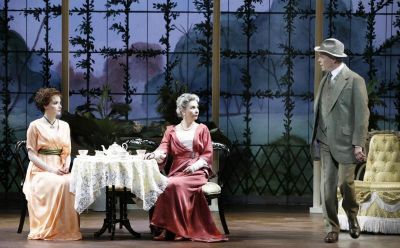
As we’ve come to expect from Australian musical theatre ensembles, the members of the company cross seamlessly between the show’s social classes, from the Cockney exuberance of Covent Garden, to upper class stuffiness, and the Upstairs, Downstairs / Downton Abbey realm of the servants. They waltz elegantly at the Embassy Ball, posture rigidly at Ascot and kick up their heels in the market district, where the male harmonies are another highlight of the evening.
Get along to My Fair Lady prepared for this promised lavish, loving recreation of this classic musical as seen on Broadway 60 years ago, parking your contemporary values at the door; you’ll not be disappointed.
If you’re likely to be offended, or unable to accept My Fair Lady as ‘of its time’, best stay away. Higgins’ misogyny is the elephant in the room (stage) when reviving My Fair Lady for modern audiences, especially its second act. Revisals of other great Golden Age musicals like Annie Get Your Gun (racism) have successfully excised sticking points, but I fear cuts would need to be extensive and closer to the core of My Fair Lady.
Neil Litchfield
Photographer: Jeff Busby
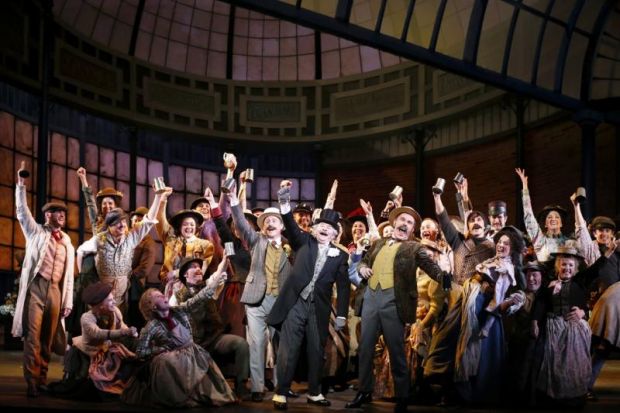
Subscribe to our E-Newsletter, buy our latest print edition or find a Performing Arts book at Book Nook.

